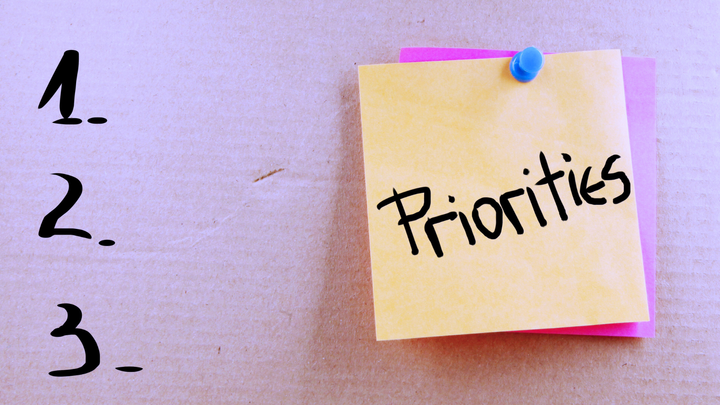How the Habit Loop Shapes Your Life (and How to Take Control)

Ever wonder why you instinctively grab your phone the second you wake up? Or why that afternoon cookie seems to call your name daily? It all comes down to a powerful behavioral mechanism called the habit loop. This three-part process—cue, routine, reward, is your brain's way of automating actions, for better or worse. But here's the good news: once you understand how it works, you can take charge and shape your habits to work for you, not against you.
Breaking Down the Habit Loop: Cue, Routine, Reward
The habit loop is like the engine of your daily behavior, and it runs on three key components:
Cue: The Spark That Ignites the Habit
The cue is a trigger that tells your brain, “Hey, it's time to do that thing!” It could be as obvious as the smell of coffee or as subtle as a pang of boredom. For example, seeing your sneakers by the door might cue you to go for a run, while a stressful email could lead to stress-eating.
Research suggests that cues often fall into one of five categories: location, time, emotional state, other people, or the action that immediately precedes it. Identifying your cues is like cracking the code to your habits. Start by jotting down what's happening when a habit kicks in; your surroundings, your feelings, even the time of day. Patterns will emerge, and with them, opportunities for change.
Routine: The Action You Take
Here's where the magic—or mischief—happens. The routine is the behavior triggered by the cue, whether that's brushing your teeth, scrolling social media, or hitting snooze for the fourth time. The beauty of routines is their automaticity, as they require little mental effort. But this also makes them tricky to change.
One effective strategy? Swap the routine for a healthier alternative while keeping the cue and reward the same. Instead of reaching for a sugary snack when stressed, you might take a brisk walk or practice deep breathing. Over time, your brain will start associating the new routine with the same reward.
Reward: The Feel-Good Finish Line
The reward is the brain's way of saying, “That was worth it, let's do it again!” Rewards can be tangible (like a treat) or intangible (like a sense of accomplishment). Dopamine, the brain's feel-good chemical, plays a starring role here, reinforcing the habit loop and making it more likely to repeat.
Experimenting with different rewards can help you figure out what truly satisfies your craving. If your post-workout smoothie isn't cutting it, maybe the real reward is the pride you feel for sticking to your fitness goals.
How to Build Better Habits Using the Habit Loop
Ready to harness the habit loop for good? Here are some science-backed strategies to help you create habits that stick:
1. Start Tiny
Big changes can be overwhelming, but small ones? Totally doable. Want to start exercising? Commit to just putting on your workout clothes at first. Once you've nailed that, add a two-minute jog. These baby steps build momentum and make habits feel less overwhelming.
2. Anchor New Habits to Existing Ones
This technique, known as “habit stacking,” is a game-changer. Pair a new habit with an existing one, like meditating right after brushing your teeth or journaling before bed. The old habit acts as a cue, making it easier to remember the new one.
3. Experiment with Rewards
Don't underestimate the power of a good reward. If your goal is to write daily, treat yourself to a favorite podcast afterward. Over time, the act of writing itself may become its own reward, but until then, external motivation can keep you on track.
4. Use the Two-Minute Rule
Getting started is often the hardest part. The two-minute rule encourages you to shrink your habit to its simplest form, something you can do in two minutes or less. Want to read more? Start with one paragraph. Once you're in motion, it's easier to keep going.
Why Some Habits Are Harder to Break
Not all habits are created equal. Deeply ingrained habits, like those tied to addiction or mental health conditions, often involve complex neurological and emotional factors. For instance, the same habit loop that helps you brush your teeth can also lock you into compulsive behaviors like nail-biting or binge-watching TV.
Critics of the habit loop model argue that it oversimplifies human behavior. While it's a great starting point, breaking or forming habits often requires addressing underlying emotions, environment, and even socio-economic factors. In other words, sometimes it's not just about willpower, it's about context.
The Bigger Picture: Applications of the Habit Loop
The habit loop isn't just a tool for personal growth, it's a framework with wide-ranging applications. Schools use it to improve study habits. Therapists apply it to help clients manage anxiety and depression. Even marketers leverage it to create addictive products (hello, social media!).
Understanding the habit loop can empower you to not only change your own behaviors but also recognize how external forces might be influencing you. Armed with this knowledge, you can make more intentional choices and design a life that aligns with your values.
Mastering Your Habit Loops
Your habits shape your life, but you shape your habits. By dissecting the habit loop into its components—cue, routine, reward—you can take control of the behaviors that define your days. Start small, stay curious, and remember: every big change starts with a single step. So, what habit will you tackle first?
For a more structured approach to habit-building, consider using tools like the Habit Tracker with Streaks from the Conqur app. It visually tracks your progress, making it easier to stay consistent and motivated. Take charge of your habits today!


